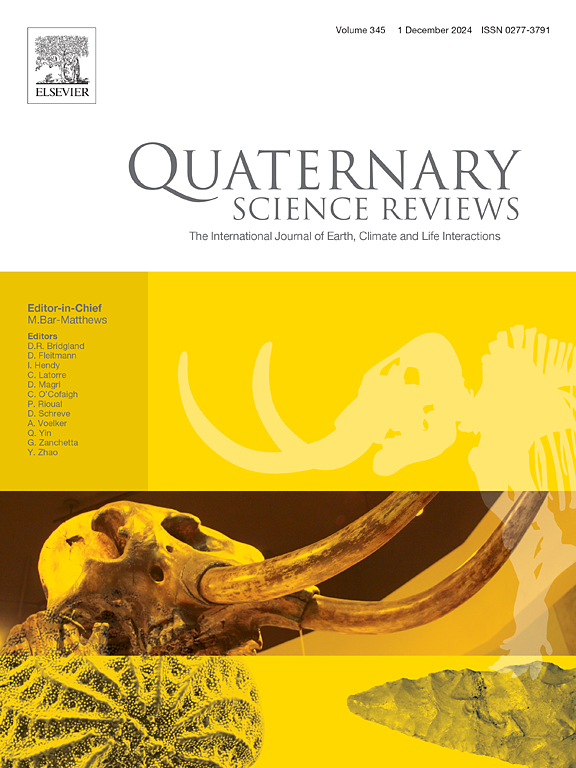Cooling induced the stagnation of vermicularisation in the subtropical region of East Asia during the Late Quaternary
IF 3.2
1区 地球科学
Q1 GEOGRAPHY, PHYSICAL
引用次数: 0
Abstract
The loess-like Quaternary Red Clay (QRC) documented the variations in regional and/or global climate during the Late Quaternary. However, the limited well-dated age of the loess-like QRC sections in the subtropical region of East Asia has previously hindered the establishment of a connection between the loess-like QRC records and global climate changes. In this study, we present ten optically stimulated luminescence ages, detrital zircon dating data, and analyses of particle size, K2O/Al2O3 molar ratio, chemical index of alteration values, and δ7Li values from 32 samples acquired from the loess-like QRC sections in the subtropical region of East Asia. The data analysis reveals that the period of vermicularisation stagnation in the region occurred approximately between 0.13 and 0.10 million years ago, and the stable source materials for the loess-like QRC section predominantly originated from the bedrock. Furthermore, the palaeoenvironmental proxies suggest that the stagnation of vermicularisation corresponds to a period characterised by dry and cold conditions with relatively weak silicate weathering and/or pedogenesis. A comprehensive analysis suggests that cooling during the Late Quaternary induced the stagnation of vermicularisation in the subtropical region of East Asia.
第四纪晚期降温导致东亚亚热带地区蛭化停滞
黄土状第四纪红土(QRC)记录了第四纪晚期区域和/或全球气候的变化。然而,东亚亚热带地区黄土状第四纪红土断面的年代有限,这阻碍了黄土状第四纪红土记录与全球气候变化之间联系的建立。在本研究中,我们展示了从东亚亚热带地区黄土状 QRC 断面采集的 32 个样品的 10 个光激发发光年龄、锆英石测定年代数据以及粒度、K2O/Al2O3 摩尔比、化学蚀变指数值和 δ7Li 值分析。数据分析显示,该地区的蛭石化停滞期大约发生在距今13万年至10万年之间,黄土状QRC剖面的稳定源物质主要来源于基岩。此外,古环境代用指标表明,蛭蚀停滞期与硅酸盐风化和/或植被形成相对较弱的干冷时期相对应。综合分析表明,第四纪晚期的降温导致了东亚亚热带地区蛭石化的停滞。
本文章由计算机程序翻译,如有差异,请以英文原文为准。
求助全文
约1分钟内获得全文
求助全文
来源期刊

Quaternary Science Reviews
地学-地球科学综合
CiteScore
7.50
自引率
15.00%
发文量
388
审稿时长
3 months
期刊介绍:
Quaternary Science Reviews caters for all aspects of Quaternary science, and includes, for example, geology, geomorphology, geography, archaeology, soil science, palaeobotany, palaeontology, palaeoclimatology and the full range of applicable dating methods. The dividing line between what constitutes the review paper and one which contains new original data is not easy to establish, so QSR also publishes papers with new data especially if these perform a review function. All the Quaternary sciences are changing rapidly and subject to re-evaluation as the pace of discovery quickens; thus the diverse but comprehensive role of Quaternary Science Reviews keeps readers abreast of the wider issues relating to new developments in the field.
 求助内容:
求助内容: 应助结果提醒方式:
应助结果提醒方式:


